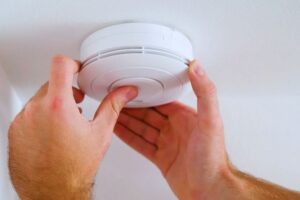It is essential to pressure test a gas line to ensure safety. This way, we decrease damages encountered in commercial and industrial facilities. But how do you conduct a gas line pressure test?
To perform a gas line pressure test, here are the steps:
- Locate the Gas Meter
- Install the Gas Line Pressure Test Gauge
- Apply Pressure
- Observe If There Are Leaks
- Conduct Necessary Repairs
Read on to learn more about the pressure test for a gas line, including how long a pressure test should be performed and the acceptable gas line pressure drop.
How to Pressure Test a Gas Line
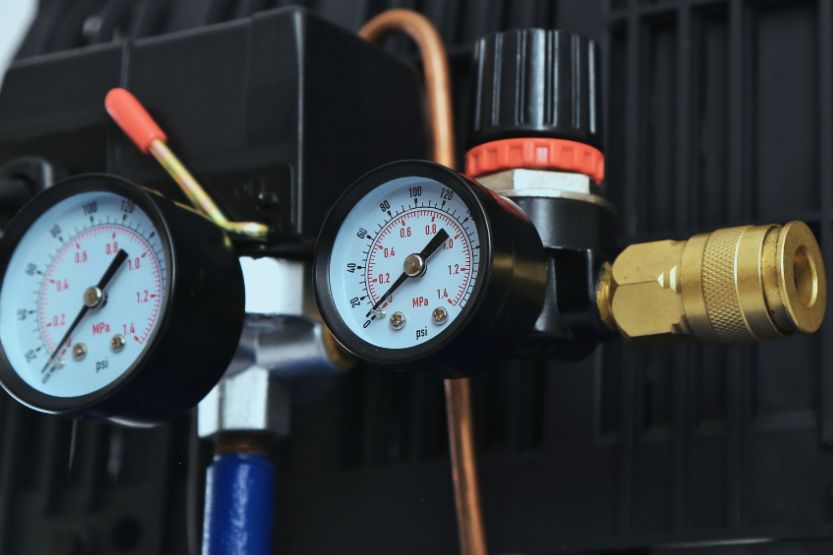
Here are the steps for performing a gas line pressure test:
- Locate the Gas Meter
- Install the Gas Line Pressure Test Gauge
- Apply Pressure
- Observe If There Are Leaks or Drops
- Conduct Necessary Repairs
Let’s briefly explain each one of them.
1. Locate the Gas Meter
When conducting a gas line pressure test, you should first locate the gas meter, which is typically on the front side of the house.
This meter is expected to have a valve that serves as the control to allow gas to enter the home. Once opened, you will find a pipe you can turn 90 degrees to turn off.
If you find it difficult to understand how your gas meter works, you can always contact your gas provider and tell them your concerns.
2. Install the Gas Line Pressure Test Gauge
You must first connect the pressure test gauge to the main line to test the gas pressure. The main line is located by the meter.
Then, calibrate the test gauge and apply a model your local gas authority recommended.
It is important to note that your test gauge must have a higher capacity than the normal gas line pressure. In the case of natural gas, the pressure of the gas line is relatively low.
3. Apply Pressure
Perform pressure measurement by first turning the valve on carefully. Then, drive the gas close to the gauge. Make sure to do this gradually and not surpass the recommended test pressure. If you apply too much pressure immediately, you might damage the testing gauge.
How long to pressure test a gas line varies, depending on its recommended duration. It is possible to hold it in place for a minimum of 15 minutes. But it is also possible to perform the pressure test the whole day.
4. Observe If There Are Leaks or Drops
Check for leaks or drops as you conduct the pressure test by observing if there is a decline in the gas pressure. In essence, a decline in gas pressure means a possible pipeline leak.
You must check all the gas pipework joints for leaks to follow the supply. Applying a bubble solution to the joints is recommended to check gas leaks conveniently.
5. Conduct Necessary Repairs
The last step is, of course, to conduct necessary repairs. However, I do not suggest you do this independently if you are not a certified gas technician.
In this case, seek assistance from a professional who can perform gas line pressure tests more extensively and conduct necessary repairs efficiently.
It is important to note that every time you add a new gas line to the main source, it is best to contact a professional who can test it. That way, you can confirm whether the gas pressure in the pipeline is proper.
Gas Line Pressure Test Code
The Gas Line Pressure Test Code may be found in Chapter 4 of the 2018 International Fuel Gas Code (IFGC), titled Gas Piping Installations. This chapter explains everything there is to know about fuel gas piping.
This includes the authorized materials, design, size, appliance connections, controls, pressure requirements, and piping support. It also consists of the authorized installation requirements and the methods for testing and purging.
Chapter 4 of the IFGC also includes the fuel dispensing systems of motor vehicles. This code was essentially established to prevent such circumstances as accidents, over- and under-pressure, and gas leakages.
How to Conduct a Gas Line Pressure Test
A gas line pressure test ensures that the gas line is working perfectly. When conducting this process, certified gas technicians allow the gas line to undergo extreme pressure.
They determine if all components are in excellent condition, reducing or eliminating the risk of gas leaks or piping system explosions. Some of these components are the joints, fittings, and pipes.
To conduct the gas line pressure test, certified gas technicians utilize pressurized air, water, or gas. The way gas technicians apply extreme pressure on the gas line allows them to determine whether or not it can withstand pressure and function well.
Also, the test confirms whether the natural gas entering commercial and industrial facilities is evenly and properly distributed.
How to Conduct a Residential Gas Line Pressure Test
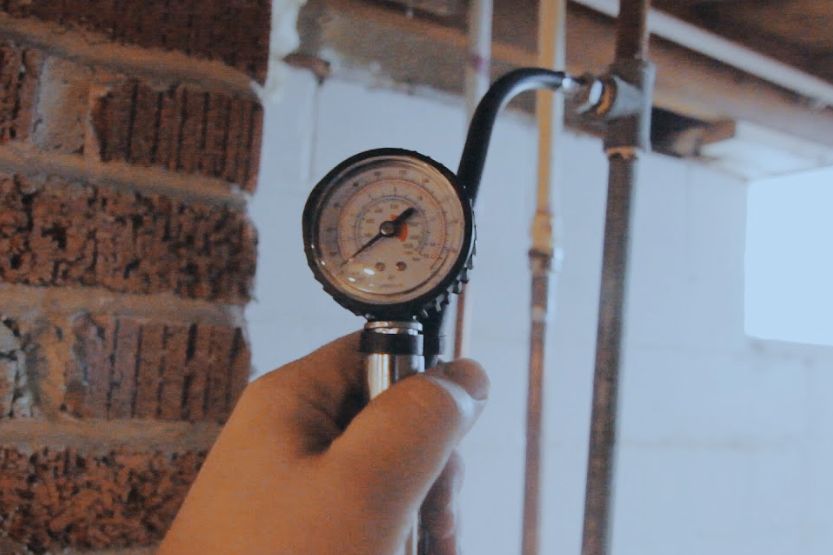
The gas line pressure test is not only recommended for commercial and industrial facilities. It is also recommended for homes.
The standard home test includes line pumping with 20 pounds per square inch (psi). Then, the line is required to hold pressure for about four hours with a drop below 2 psi.
Always wear personal protective gear when conducting a pressure test for a residential gas line.
Different Ways of Conducting Gas Line Pressure Testing
There are different ways of conducting gas line pressure testing, typically divided into the hydraulic and pneumatic methods.
The hydraulic pressure testing method makes use of water. At the same time, the pneumatic pressure testing method backs the capabilities of nonflammable gas for pressure tests.
When conducting the hydraulic method, gas technicians typically add dye to the water to conveniently identify leakages or other related issues.
This method is more often used than the pneumatic one because it is safer. However, the pneumatic way is ideal for pressure tests for lower gas lines.
Tips for a Successful Gas Line Pressure Testing
Before conducting a natural gas line pressure test, a complete walkthrough of the line is required. This will allow certified gas technicians to identify issues conveniently.
Gas technicians must expose and assess all joints in the gas piping system. They are required to sort system parts and separate those that will be part of the test and those that are not.
Other tips for gas line pressure testing include the following:
- Validation of the required test pressure as well as the time in the operation area
- Calibration of gauges
- Use safety tapes and barricades
- Application of gradual pressure
- Check joints and connections for leaks
Again, how long should you pressure test a gas line? Gas line inspections usually take around 30 minutes. During this time, the lines should hold pressure 3X the working pressure load. The lines are fine if a gas line loses two psi from a 20 psi test.
Who Can Conduct Gas Line Pressure Tests
While you can conduct gas line pressure tests at home, it is not advisable unless you are a certified gas technician.
Contact a certified gas technician immediately if you suspect a gas leak in your home or your gas appliances is not working correctly.
If you constantly smell gas for some reason or suspect a problem with your gas line, do not even think twice about getting in touch with a professional.
Again, while you can conduct gas line pressure tests on your own, there are limitations to what you can do. Certified gas technicians can conduct extensive tests and immediately perform necessary repairs:
Frequently Asked Questions – Gas Line Pressure Testing
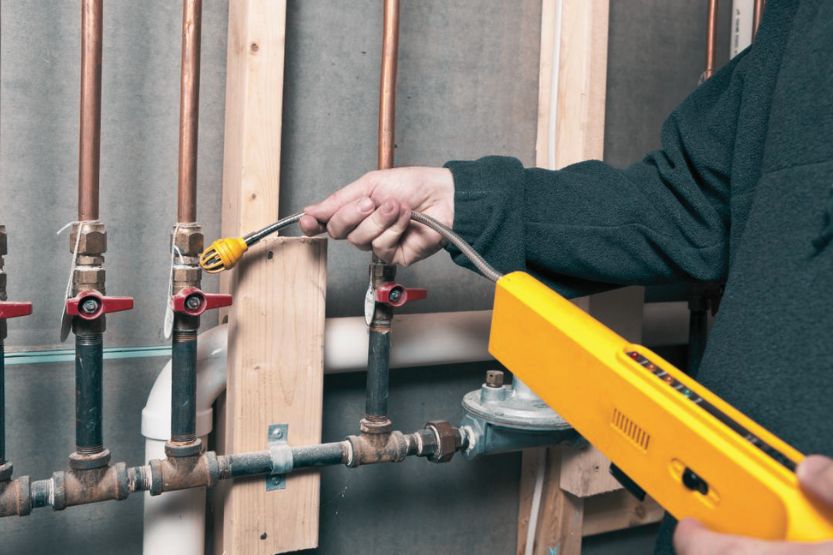
Here are some frequently asked questions related to gas line pressure testing:
What Pressure Should Gas Be Tested?
If the gas line drops about 2 pounds per square inch from a pressure test with 20 psi on the line, then the gas lines are relatively acceptable.
However, it most likely leaks if the line drops more than 10%. This drop may be confirmed after performing a test for 30 minutes or even one whole day.
It must also be noted that environmental factors impact gas line fluctuations.
How Do You Do a Gas Test?
The steps for carrying out a gas tightness test include attaching the gas test gauge to the gas meter, opening the meter’s supply valve, and monitoring the gauge for 60 seconds.
Then, gradually open the supply valve until the gauge indicates 20 mbar, close the valve, and wait for 60 seconds. Then, monitor the gauge for about 2 minutes to confirm whether or not the test is successful.
How Many PSI Is a Residential Gas Line?
The gas line’s natural gas pressure that leads to the home ranges between ¼ pounds per square inch and 60 psi. It all depends on the number of residences or business establishments served by the gas line.
This can be compared to pressures of 1,500 psi, ideal for large pipelines. This type of pipeline is typically used for moving gas to local utilities from well fields.
What Is Normal Residential Natural Gas Pressure?
For natural gas appliances, the general operating pressure is about seven inches from the water column. If restated in its equivalent measure, it translates to 1743 Pascals (Pa) or 14.9 millibars. That is also approximately four ounces of pressure per square inch or 0.25 pounds per square inch.
What Pressure Should Natural Gas Be?
In each section of the gas line, the gas pressure generally ranges between 200 lbs and 1,500 lbs per square inch. Suffice it to say that the gas pressure depends on the area of pipeline operation.
How Long Is a Gas Tightness Test?
The duration of a tightness test typically lasts 2 minutes or 120 seconds. There is a successful tightness test if there is no gas smell or perceptible gauge movement. This applies not only to new installations but also to existing ones that do not have connected appliances.
How Common Are Gas Leaks?
Gas leaks are common in homes. This is dangerous as it increases the risk of catching fire, an explosion, or poisoning due to carbon monoxide.
It is important to be alert at all times and to observe if there is a possible gas leak occurring regularly. Remember that this might go unnoticed, especially if you are not observant of your surroundings.
Which Testing Method Would Detect an Extremely Small Leak in the Gas Piping System?
Conducting a Soap Solution Bubble Test effectively detects a tiny leak in the gas piping system. This solution merely includes soap and water. In some cases, certified gas technicians recommend using dish soap and a rag or a brush.
Can You Pressure Test Through a Gas Regulator?
When it comes to the line pressure test, it is indicated in Chapter 8 of the National Fire Protection Association (NFPA) 54 code and standards that gas controls must be removed or isolated from the test. This includes the regulator.
What Happens If Gas Pressure Is Too Low?
The efficiency of your furnace will decline if there is too low gas pressure. It can also result in a great amount of burned gas condensation. This may happen because of the imbalance of the air-fuel mixture.
How Are Natural Gas Lines Pressurized?
As natural gas travels through a pipeline, it is typically highly pressurized. It must then be compressed along the pipeline periodically to maintain natural gas pressure.
Pressurize natural gas lines through compressor stations. Compressor stations compress gas by the engine, motor, or turbine.
Do You Need a Pressure Regulator for Natural Gas?
There is piping located outside the structure, which delivers gas. This piping typically distributes gas at a pressure higher than what is required. The pressure then tends to rise and fall.
The absence of a natural gas regulator can significantly change or decrease the gas pressure in the pipes, which leads to different appliances.
How Do I Increase Gas Pressure in My House?
You can increase the gas pressure in your house by pulling off the regulator cap. You will notice a spring as well as a screw underneath.
If you turn the screw clockwise, the outlet pressure typically increases. However, the adjustment’s direction is marked on the regulator. Slightly turn the screw to add small pressure.
What Does WC Mean for Gas Pressure?
In terms of gas pressure, WC means Inches of Water Column. It refers to the traditional method of measurement involving natural gas or propane.
What Is Considered a High-Pressure Gas Line?
A high-pressure gas line refers to pipelines operating at pressures of more than 60 pounds per inch. It delivers gas in tiny volumes as it enters the medium pressure distribution system.
Does Natural Gas Rise or Fall?
Natural gas is undoubtedly lighter compared to air. If it escapes from a leaking fitting or a burner, it will typically rise in a room. On the contrary, propane is always heavier compared to air.
If it escapes, it will likely settle in low-level areas such as the basement. The incompleteness of combustion happens when there is a richer gas mixture of more than 10 percent.
Can I Work on Medium Pressure Gas?
You should indicate the required meter pressure for medium pressure (MP) installations. Remember that you will need a Senior Meter Technician (SMT) engineer before you can work on medium-pressure gas.
Also, the SMT engineer must have undergone training specifically for medium pressure gas. It is important to note that not all SMT engineers are trained in this field.
What Is the Allowable Pressure Drop in Natural Gas?
The piping code indicates that natural gas users should expect a single-watt drop for low pressure at about 1.07 inches. Based on the pipe sizing formula, the required low-pressure gas per pipe is 7.7 lbs.
Is a Small Gas Leak Okay?
A gas leak, no matter how small, is dangerous. It is still capable of catching fire or triggering an explosion.
Will Carbon Monoxide Detector Detect Gas Leak?
The purpose of the carbon monoxide detector is not to sense the presence of gas. Its primary goal is to detect elevated carbon monoxide levels before it leads to air quality problems such as toxic gas.
In Closing: How to Pressure Test a Gas Line?
To sum it up, the steps for pressure testing a gas line include the following:
- Locate the Gas Meter
- Install the Gas Line Pressure Test Gauge
- Apply Pressure
- Observe If There Are Leaks or Drops
- Conduct Necessary Repairs
While you can conduct the gas line pressure test independently, leaving this task with certified gas technicians and/or senior meter technician engineers is best.

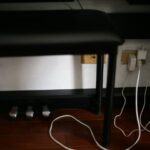
![Hot Water Pressure Low but Cold Fine [Causes and How to Fix] Hot Water Pressure Low but Cold Fine](https://homecarezen.com/wp-content/uploads/2021/12/hot-water-pressure-low-but-cold-fine-150x150.jpg)

